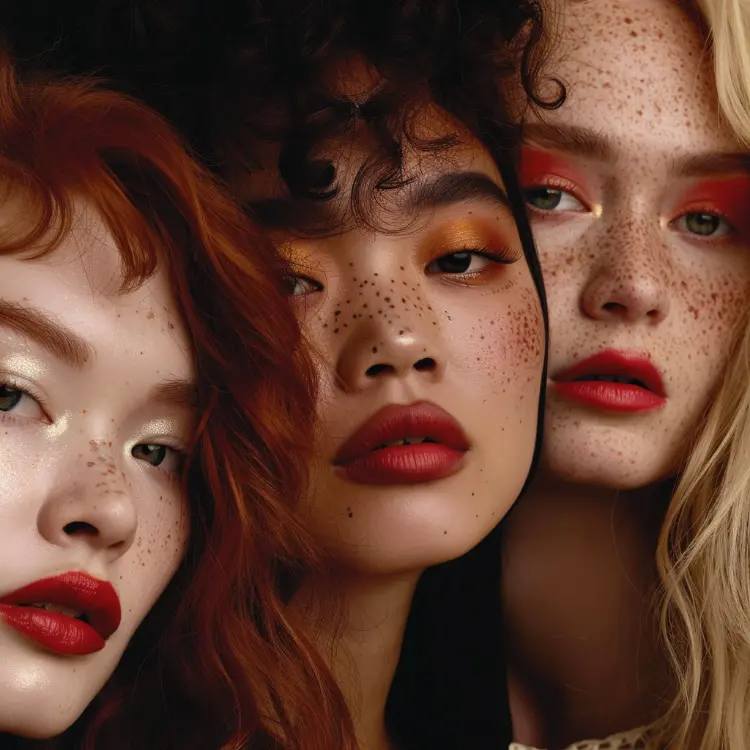Choosing the right makeup can be one of the most challenging parts of getting ready. With countless options and often conflicting advice from beauty experts, it's easy to feel overwhelmed. This guide will teach you how to master color-matching for your face, ensuring you always pick the shades that enhance your natural beauty, regardless of the latest trends.

If you have dark hair, light skin, and dark or medium eyes, like Jackie Onassis, you fall into the high contrast category. High contrast individuals can pull off more dramatic makeup looks. Think bold lip colors and striking eye makeup.
For those with medium-brown hair, medium-light skin, and medium-dark eyes, like Jennifer Aniston or Vanessa Williams, you are a medium contrast person. A balanced makeup style that is neither too bold nor too subtle works best for you.
If your features blend softly, such as blonde hair, light blue eyes, and light skin, you are a low contrast person. Examples include Melanie Griffith and Meryl Streep. Subtle, blended makeup that doesn't stand out dramatically will complement your natural look.
If you have an even complexion, you can experiment with darker colors to add depth. Smooth skin allows for more flexibility in makeup choices.
For those with freckles, beauty marks, or indentations, darker colors may accentuate these features. Opt for lighter shades to avoid adding extra shadow and making the texture more pronounced.
Freckles and beauty marks add unique elements to your face. Instead of hiding them, use makeup to highlight these points of interest.
Your hair texture also plays a role in your makeup choices. Curly or wavy hair can make the area around your face appear busier. If you have curls that fall into your face, opt for simpler makeup to avoid overwhelming your natural beauty. Straight hair allows for more dramatic makeup styles.
Choosing the right makeup doesn't have to be daunting. By understanding your natural contrast, skin texture, and the patterns in your skin and hair, you can make informed decisions that highlight your best features. Keep this color-matching guide handy, and you'll never feel intimidated at the makeup counter again.
For more detailed insights on skin tones and makeup, check out Allure's guide on finding your perfect foundation and Vogue's tips on makeup for different skin types.
Sources:

The Latest Trends and You
A Wardrobe Consultant Talks about What Works and What Doesn’t
Lose 10 Pounds without Going on a Diet
Tips from a Professional Design Consultant
What Statement Are Your Clothes Making? Style for Men
Body and verbal language can be confusing. But what message are your clothes sending? Sometimes we don’t know what are clothing is saying ...